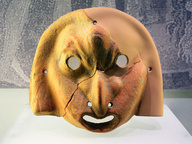At Home in Holland: Vermeer and his Contemporaries from the British Royal Collection
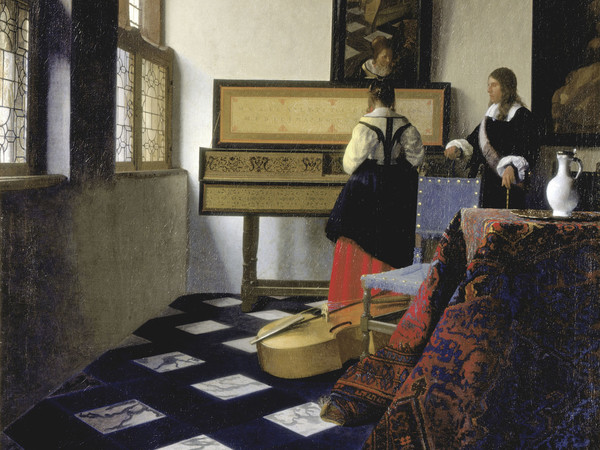
Johannes Vermeer (1632-1675), Lady at the Virginals with a Gentleman, c.1660-1662. Royal Collection Trust / © Her Majesty Queen Elizabeth II 2016
From 29 Settembre 2016 to 08 Gennaio 2017
The Hague | World
Place: Mauritshuis
Address: Plein 29
Times: Monday 1pm-6pm. From Tuesday to Sunday 10am-6pm (Wednesday until 8pm)
Organizers:
- Royal Collection Trust
- Maurithuis
Ticket price: Adults € 14 (youth under the age of 19 free)
Telefono per informazioni: +31 (0)70 302 3456
E-Mail info: Mail@mauritshuis.nl
Official site: http://www.mauritshuis.nl
A royal visit from Great Britain: from 29 September 2016 to 8 January 2017 the Mauritshuis in The Hague will exhibit a selection of the most important Dutch genre paintings from the British Royal Collection. The famous Royal Collection, held in trust by Her Majesty Queen Elizabeth II, contains highlights from the oeuvres of famous painters such as Gerard ter Borch, Gerrit Dou, Pieter de Hooch, Gabriël Metsu and Jan Steen. The highlight of the exhibition is The Music Lesson by Johannes Vermeer.
Emilie Gordenker, Director of the Mauritshuis: “Never before has such a large group of genre paintings from the British Royal Collection been on view in the Netherlands. It is a great honour to have them in the Mauritshuis for the duration of the exhibition.”
The Royal Collection has world class holdings. It contains many paintings from the Dutch Golden Age and gives pride of place to its genre paintings, scenes that appear to be taken from everyday life. The exhibition At Home in Holland: Vermeer and his Contemporaries from the British Royal Collection introduces the public to the ‘genre painting’, its many forms and the provocative symbolism it often conceals. There is a wealth of variety in these works, from simple farmhands gathered in an inn to elegant figures in rich interiors. Some of the everyday scenes carry a deeper, often moralistic meaning, which may be explicit or at times concealed. In any case, the artists aim to portray the characters and their environments as beautifully as possible, and their great skill in painting adds to the visual pleasure.
About the exhibition
The exhibition covers a broad selection of the best Dutch genre paintings from the Royal Collection. It includes 22 paintings from the British Royal Collection plus one belonging to the Mauritshuis, The Young Mother by Gerrit Dou. This painting was part of the British Royal Collection until about 1700, and came into Dutch ownership through King and Stadholder William III. The highlights of the exhibition are Johannes Vermeer's The Music Lesson and Jan Steen's A Woman at her Toilet. Also featured are significant works by other grand masters of Dutch genre painting, such as Gerard ter Borch, Gerrit Dou, Pieter de Hooch, Willem van Mieris and Gabriël Metsu.
The Music Lesson is one of 36 surviving and very rare pieces by Johannes Vermeer. This painting dates from 1660-1662 and shows a lady and a gentleman beside a virginal. Above the instrument hangs a mirror, in which we see the reflection of the foot of Vermeer's easel. Music is undoubtedly a symbol of love in this painting, and this is confirmed by the Latin maxim on the virginal. The painting was acquired by King George III of England in 1762, but was attributed to Frans van Mieris the Elder at the time. Only later was it recognised as a piece by Vermeer.
Another of the exhibition's highlights is a painting by Jan Steen, which dates from 1663. It was once known as A Woman at Her Toilet. In it we see a young woman who, judging by the indents above her calves, is not pulling her stocking on, but off, as her eyes meet those of the viewer. Here too, the context is seen as amorous. These representations were extremely popular in their day. Steen makes the point that the physical pleasures are transient by showing a skull in the door opening, under a lute with a broken string.
The Royal Collection and the Mauritshuis
The British Royal Collection is one of the largest and most important collections in the world and one of the last great European royal collections to remain intact. The Royal Collection and the Mauritshuis have much in common: both are royal collections and both contain a magnificent collection of Dutch masters of the Golden Age. King George IV of England was a key figure in the history of the Royal Collection. In the early decades of the nineteenth century he acquired many of the paintings which are now seen as jewels in the crown of the English royal collection. The foundations for the Mauritshuis collection were laid by the stadholders William IV and William V. Their descendant, King William I, bequeathed the collection to the Dutch state in 1816 and the museum still bears the name Mauritshuis Royal Picture Gallery.
The exhibition At Home in Holland: Vermeer and his Contemporaries from the British Royal Collection is a collaboration between Royal Collection Trust and the Mauritshuis. The exhibition was held at The Queen’s Gallery, Buckingham Palace, London, under the title Masters of the Everyday: Dutch Artists in the Age of Vermeer from 13 November 2015 to 14 February 2016. It is currently on display at The Queen’s Gallery, Palace of Holyroodhouse, Edinburgh until 17 July 2016. Then, from Thursday 29 September 2016, the paintings will be on view in the Mauritshuis in The Hague.
Catalogue
The exhibition is accompanied by a richly illustrated Dutch and English language catalogue, published by Royal Collection Trust, the Mauritshuis and Mercatorfonds. The catalogue was written by the exhibition's curators, Desmond Shawe-Taylor (Surveyor of the Queen’s Pictures, Royal Collection Trust) and Quentin Buvelot (head curator at the Mauritshuis). Masters of the Everyday: Dutch Artists in the Age of Vermeer is currently available from the Mauritshuis museum shop.
Emilie Gordenker, Director of the Mauritshuis: “Never before has such a large group of genre paintings from the British Royal Collection been on view in the Netherlands. It is a great honour to have them in the Mauritshuis for the duration of the exhibition.”
The Royal Collection has world class holdings. It contains many paintings from the Dutch Golden Age and gives pride of place to its genre paintings, scenes that appear to be taken from everyday life. The exhibition At Home in Holland: Vermeer and his Contemporaries from the British Royal Collection introduces the public to the ‘genre painting’, its many forms and the provocative symbolism it often conceals. There is a wealth of variety in these works, from simple farmhands gathered in an inn to elegant figures in rich interiors. Some of the everyday scenes carry a deeper, often moralistic meaning, which may be explicit or at times concealed. In any case, the artists aim to portray the characters and their environments as beautifully as possible, and their great skill in painting adds to the visual pleasure.
About the exhibition
The exhibition covers a broad selection of the best Dutch genre paintings from the Royal Collection. It includes 22 paintings from the British Royal Collection plus one belonging to the Mauritshuis, The Young Mother by Gerrit Dou. This painting was part of the British Royal Collection until about 1700, and came into Dutch ownership through King and Stadholder William III. The highlights of the exhibition are Johannes Vermeer's The Music Lesson and Jan Steen's A Woman at her Toilet. Also featured are significant works by other grand masters of Dutch genre painting, such as Gerard ter Borch, Gerrit Dou, Pieter de Hooch, Willem van Mieris and Gabriël Metsu.
The Music Lesson is one of 36 surviving and very rare pieces by Johannes Vermeer. This painting dates from 1660-1662 and shows a lady and a gentleman beside a virginal. Above the instrument hangs a mirror, in which we see the reflection of the foot of Vermeer's easel. Music is undoubtedly a symbol of love in this painting, and this is confirmed by the Latin maxim on the virginal. The painting was acquired by King George III of England in 1762, but was attributed to Frans van Mieris the Elder at the time. Only later was it recognised as a piece by Vermeer.
Another of the exhibition's highlights is a painting by Jan Steen, which dates from 1663. It was once known as A Woman at Her Toilet. In it we see a young woman who, judging by the indents above her calves, is not pulling her stocking on, but off, as her eyes meet those of the viewer. Here too, the context is seen as amorous. These representations were extremely popular in their day. Steen makes the point that the physical pleasures are transient by showing a skull in the door opening, under a lute with a broken string.
The Royal Collection and the Mauritshuis
The British Royal Collection is one of the largest and most important collections in the world and one of the last great European royal collections to remain intact. The Royal Collection and the Mauritshuis have much in common: both are royal collections and both contain a magnificent collection of Dutch masters of the Golden Age. King George IV of England was a key figure in the history of the Royal Collection. In the early decades of the nineteenth century he acquired many of the paintings which are now seen as jewels in the crown of the English royal collection. The foundations for the Mauritshuis collection were laid by the stadholders William IV and William V. Their descendant, King William I, bequeathed the collection to the Dutch state in 1816 and the museum still bears the name Mauritshuis Royal Picture Gallery.
The exhibition At Home in Holland: Vermeer and his Contemporaries from the British Royal Collection is a collaboration between Royal Collection Trust and the Mauritshuis. The exhibition was held at The Queen’s Gallery, Buckingham Palace, London, under the title Masters of the Everyday: Dutch Artists in the Age of Vermeer from 13 November 2015 to 14 February 2016. It is currently on display at The Queen’s Gallery, Palace of Holyroodhouse, Edinburgh until 17 July 2016. Then, from Thursday 29 September 2016, the paintings will be on view in the Mauritshuis in The Hague.
Catalogue
The exhibition is accompanied by a richly illustrated Dutch and English language catalogue, published by Royal Collection Trust, the Mauritshuis and Mercatorfonds. The catalogue was written by the exhibition's curators, Desmond Shawe-Taylor (Surveyor of the Queen’s Pictures, Royal Collection Trust) and Quentin Buvelot (head curator at the Mauritshuis). Masters of the Everyday: Dutch Artists in the Age of Vermeer is currently available from the Mauritshuis museum shop.
SCARICA IL COMUNICATO IN PDF
johannes vermeer ·
jan steen ·
gerard ter borch ·
gerrit dou ·
pieter de hooch ·
willem van mieris ·
gabri l metsu ·
johannes vermeer jan steen gerard ter borch gerrit dou pieter de hooch willem van mieris gabri ·
at home in holland vermeer and his contemporaries from the british royal collection ·
mauritshuis ·
the hague
COMMENTI

-
 Dal 27 marzo 2025 al 27 luglio 2025
Milano | Pirelli HangarBicocca
Dal 27 marzo 2025 al 27 luglio 2025
Milano | Pirelli HangarBicocca
-
 Dal 27 marzo 2025 al 30 giugno 2025
Bologna | Museo Civico Archeologico
Dal 27 marzo 2025 al 30 giugno 2025
Bologna | Museo Civico Archeologico
-
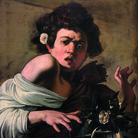 Dal 27 marzo 2025 al 20 luglio 2025
Firenze | Villa Bardini
Dal 27 marzo 2025 al 20 luglio 2025
Firenze | Villa Bardini
-
 Dal 25 marzo 2025 al 24 agosto 2025
Brescia | Museo di Santa Giulia
Dal 25 marzo 2025 al 24 agosto 2025
Brescia | Museo di Santa Giulia
-
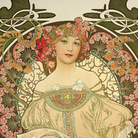 Dal 22 marzo 2025 al 20 luglio 2025
Ferrara | Palazzo dei Diamanti
Dal 22 marzo 2025 al 20 luglio 2025
Ferrara | Palazzo dei Diamanti
-
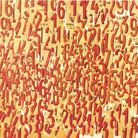 Dal 22 marzo 2025 al 08 giugno 2025
Venezia | Ca’ Pesaro – Galleria Internazionale d’Arte Moderna
Dal 22 marzo 2025 al 08 giugno 2025
Venezia | Ca’ Pesaro – Galleria Internazionale d’Arte Moderna


